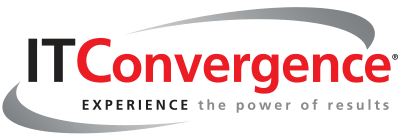Key takeaways:
|
As organizations shift more critical workloads to the cloud, especially in hybrid and multi-cloud setups, data privacy and protection are no longer IT checkboxes, they’re strategic imperatives.
As regulations mature, cloud managed services providers (CMSPs) are facing unprecedented scrutiny from CIOs, CISOs, compliance officers, and enterprise architects alike. The stakes are high: One privacy breach could cost millions in regulatory fines, legal fees, and loss of customer trust. That’s why today’s leading enterprises are doubling down on cloud partners who embed data privacy and compliance controls into their infrastructure, tooling, and culture, from identity and access management (IAM) to zero-trust network architectures.
This blog explores the most urgent data privacy and protection challenges in cloud managed services today, what best practices are emerging for 2025 and beyond, and how IT Convergence helps enterprises stay compliant and resilient through proactive, policy-aligned cloud governance.
Data Privacy Expectations in 2025 and Beyond
In 2025, enterprise expectations around data privacy in cloud managed services have drastically evolved. Businesses no longer view privacy as a reactive compliance function. Instead, data protection is now baked into digital transformation agendas and board-level strategies.
Here’s what modern enterprises demand from their CMSPs:
| Expectation | Why It Matters | Source |
| Proactive Regulatory Compliance | Organizations expect CMSPs to help navigate and enforce global and regional regulations like GDPR, CCPA, Brazil’s LGPD, and India’s DPDP Act | DLA Piper |
| Data Residency Transparency | Enterprises demand to know exactly where data resides and whether it crosses borders | IAPP & EY Privacy Governance Report 2023 |
| Zero Trust Architecture by Default | Perimeter-based security is no longer enough; access must be continuously verified | NIST Zero Trust Architecture Guide |
| Always-On Encryption & Tokenization | Companies expect encryption both at rest and in transit with optional masking or tokenization at the application level | Oracle Cloud Security Overview |
| Auditability and Logging | Enterprises must prove compliance with data-handling regulations through built-in audit trails and logging | ISACA 2023 State of Cybersecurity |
Top Threats and Missteps in Cloud Privacy
As cloud adoption continues to surge, so do the attack surfaces…and the consequences of a privacy misstep. Even companies with robust cloud architectures are not immune. From misconfigurations to third-party risks, the vulnerabilities lie not in the cloud itself, but in how it’s configured, governed, and monitored.
Cloud Privacy Threats Making Headlines
- Misconfigured Storage Buckets: Over 80% of cloud breaches are caused by misconfigurations, often exposing sensitive personally identifiable information (PII) due to publicly accessible buckets or relaxed firewall rules.
- Shadow IT & Unapproved Apps: Employees using unsanctioned SaaS tools often bypass corporate security protocols, leading to accidental data leakage and non-compliance.
- Third-Party Vendor Risks: Nearly 60% of data breaches now originate from vulnerabilities in vendor ecosystems and shared service models.
- Inadequate Role-Based Access Control (RBAC): Without precise IAM (Identity and Access Management), sensitive data may be overexposed to users who don’t need it, violating the least privilege principle.
- Tokenization and Encryption Gaps: Failure to encrypt data at all stages (in transit, at rest, in use) or skipping tokenization for financial or health data can quickly spiral into a compliance breach under laws like HIPAA, GDPR, or the India DPDP Act.
Missteps Enterprises Often Make
| ❌ Misstep | 🚫 Impact |
| Treating privacy as an “IT issue” only | Leaves legal, HR, and finance blindsided in audits or investigations |
| Assuming cloud vendors are solely liable | Most compliance frameworks (e.g., GDPR) place shared responsibility |
| Delaying regular privacy assessments | Creates blind spots, especially as regulations and threat vectors evolve |
| Skipping data localization checks | Violates residency requirements, especially in finance and healthcare sectors |
| Underinvesting in automation and AI | Manual DLP (Data Loss Prevention) tools can’t keep pace with hybrid threats |
Best Practices for Secure Cloud Data Management in 2025
The conversation around data privacy has evolved. It’s no longer just about encryption. It’s about governance, automation, compliance-by-design, and real-time visibility across cloud and hybrid environments. Below are the 2025-forward practices top enterprises are implementing to minimize risk while maximizing cloud ROI.
1. Adopt a Zero Trust Architecture
Gone are the days of perimeter-based security. Zero Trust assumes breach and verifies every access attempt, whether it’s a user, app, or machine.
- Implement identity-aware proxies and contextual access decisions.
- Apply least privilege access across infrastructure, apps, and data layers.
- Use continuous monitoring to evaluate device posture, geolocation, and behavioral anomalies.
2. Use AI-Driven Data Classification & DLP
Modern enterprises deal with sprawling, multi-format data. Manual classification is no longer feasible.
- Deploy AI-based data discovery tools to automatically tag sensitive information across structured and unstructured sources.
- Use cloud-native DLP to enforce rules based on data type, location, and user risk profile.
3. Embed Compliance Frameworks into DevOps (Compliance-as-Code)
Cloud compliance can no longer be retroactive. It needs to be embedded into development pipelines.
- Integrate CIS, NIST, ISO 27001 templates directly into CI/CD pipelines.
- Automate remediation with policy-as-code tools like Terraform + Sentinel or OPA Gatekeeper.
- Run continuous audit checks using cloud security posture management (CSPM) tools.
4. Implement Data Masking & Tokenization for PII/PHI
Not all sensitive data should be stored or shown in raw format, even internally.
- Mask data for developers, testers, and analysts using dynamic data masking.
- Tokenize financial and health data to meet PCI DSS and HIPAA requirements without reducing usability.
5. Monitor and Remediate in Real Time with CNAPP
Cloud-Native Application Protection Platforms (CNAPPs) now combine workload protection, CSPM, and compliance tracking in one unified view.
- Detect and remediate drift from known-good configurations.
- Correlate findings across cloud APIs, data flow logs, and app activity in real time.
- Reduce Mean Time to Detect (MTTD) and Mean Time to Remediate (MTTR).
OCI-Specific Capabilities for Cloud Privacy Excellence
Oracle Cloud Infrastructure (OCI) goes far beyond basic encryption or siloed controls. Its architecture was purpose-built for secure multitenancy, data sovereignty, and compliance-first operations, making it a standout choice for enterprises navigating complex regulatory landscapes.
Below, we break down the privacy-first capabilities that make OCI a strategic partner in cloud data protection:
1. Isolated Network Virtualization for Maximum Tenant Isolation
Unlike traditional cloud platforms, OCI separates the control and data planes using off-box network virtualization.
- This reduces the risk of lateral movement attacks between tenants.
- Ensures even privileged Oracle admins cannot access customer workloads.
2. Customer-Controlled Encryption Keys (CCE)
With OCI Vault, customers maintain full lifecycle control of their encryption keys, whether using Oracle-managed or customer-managed HSM-backed keys.
- Integrated with Oracle Database, Object Storage, Block Volumes, and Autonomous DB.
- Compliant with FIPS 140-2 and integrates seamlessly with OCI Identity & Access Management.
3. Built-In Cloud Guard & Anomaly Detection
OCI’s Cloud Guard automates detection and remediation of misconfigurations and unusual activity.
- Monitors cloud resources continuously for policy violations.
- Integrates with OCI Logging, IAM, and Threat Intelligence to auto-quarantine compromised resources or revoke risky access.
4. Sovereign Cloud & Data Residency Options
With OCI’s Sovereign Cloud Regions, Oracle offers deployment options that meet EU, national, and industry data localization requirements.
- Data stays within jurisdictional boundaries.
- Full operational control can be delegated to in-region personnel to avoid cross-border access.
5. Granular Identity and Access Controls (IAM)
OCI offers policy-driven IAM with identity domains, conditional logic, and fine-grained access scopes.
- Integrates with enterprise identity providers like Okta, Azure AD, and Ping.
- Supports multi-factor authentication, SCIM, and identity federation across OCI tenants.
Frequently Asked Questions (FAQs)
- Why is cloud data privacy more important than ever in 2025?
Because the volume, sensitivity, and regulatory oversight of data are all increasing. In 2025, global privacy laws are stricter, cyberattacks are more frequent, and the reputational and financial costs of breaches have never been higher. - How does OCI differ from other cloud providers in terms of privacy and security?
OCI offers true tenant isolation, off-box network virtualization, sovereign cloud options, and zero-trust enforcement that are uniquely aligned to the needs of regulated industries and global enterprises. - What role do managed services play in cloud data protection?
Managed services bring dedicated experts, 24/7 monitoring, automated patching, vulnerability management, and incident response, reducing the burden on internal teams and improving security posture. - Can OCI help me meet regulatory requirements like GDPR, HIPAA, or CCPA?
Yes. OCI provides region-specific controls, audit logging, encryption key management, and compliance documentation that align with most global regulatory frameworks.




